The 2023 Bollywood blockbuster movie Pathaan marked the whopping Rs 1050 cr box-office collection, creating records, and heralded in changes empowering visually impaired people to “watch” movies despite their disabilities. Besides reaffirming SRK’s stardom, the film gave new contours to the Rights of Persons with Disabilities Act, 2016, by holding giant Bollywood production houses responsible for producing user-friendly films for People with Disabilities (PwD).
The courage of young Akshat Baldwa, a visually impaired student of the National Law School of India University, Bengaluru, has now enabled the screening of movies for the visually impaired people in Chennai and other parts of the country. Baldwa and his three friends had moved to the Delhi High Court seeking audio description, subtitles and closed captions in films to make it accessible for visually and hearing-impaired people. The provisions are already mandated under Rights of Persons with Disabilities (RPWD) Act, 2016.

How did the case come up?
Akshat filed the petition on January 16, 2023. The Delhi High Court admitted a petition that raised two critical issues regarding the accessibility of the entertainment field for hearing- and visually impaired persons. Talking to The Voices, Akshat said that as per Section 42 of the Rights of Persons with Disabilities (RPWD) Act, the government must ensure that all such content is available in accessible formats for persons with disabilities. He added that the court directed that in the context of films, special measures should be taken into consideration for hearing- and visually impaired persons, as the experience of watching a movie in the theatre cannot be denied to such persons.
Continuing the case, the Ministry of Information & Broadcasting (MIB) introduced guidelines on March 15, 2024, to enhance accessibility standards for persons with hearing and visual disabilities in the public exhibition of feature films in theatres. The aim is to raise Divyangjan’s accessibility standards in the film viewing experience and ensure their participation is equal to that of non-disabled peers.
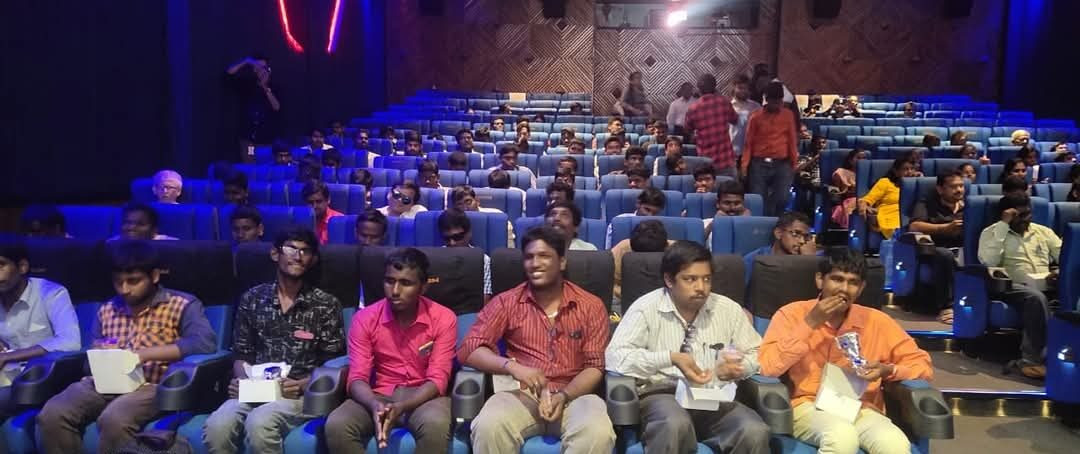
How have the court directions shaped up film viewing for Divyangjan?
D. Balamurali (IAS), Regional Officer of CBFC, Chennai, said that the Accessibility Standards for PWDs in Cinema have been successfully implemented in India. “The Central Board of Film Certification has started examining the films with mandatory CC and AD facilities from September 2024 onwards, and it’s mentioned in the certificate issued by censor board too. Moreover, the CBFC dashboard website E-Cinepramaan has also been implemented. As a part of the process for film certification, applicants must submit their films incorporating required accessibility standards, facilities, CC/OC, and AD for the hearing and visually impaired,” the officer said while talking to The Voices.

The officer added that since September 2024, it’s essential for Indian feature films to have certification in multiple languages, and the rest of the films should follow these guidelines starting from January 2026.
How is a disabled person enabled to enjoy a film?
As per the new guidelines, every theatre must provide closed captioning (CC) and audio description (AD). For those unfamiliar, audio descriptions refer to the verbal narration or voiceover techniques/commentary of visual scenes in a film. The technique enhances the cinema viewing experience for visually impaired persons by describing the actions, scene changes, facial expressions, and other key visual details, especially during scenes of the movie where there are no dialogues.
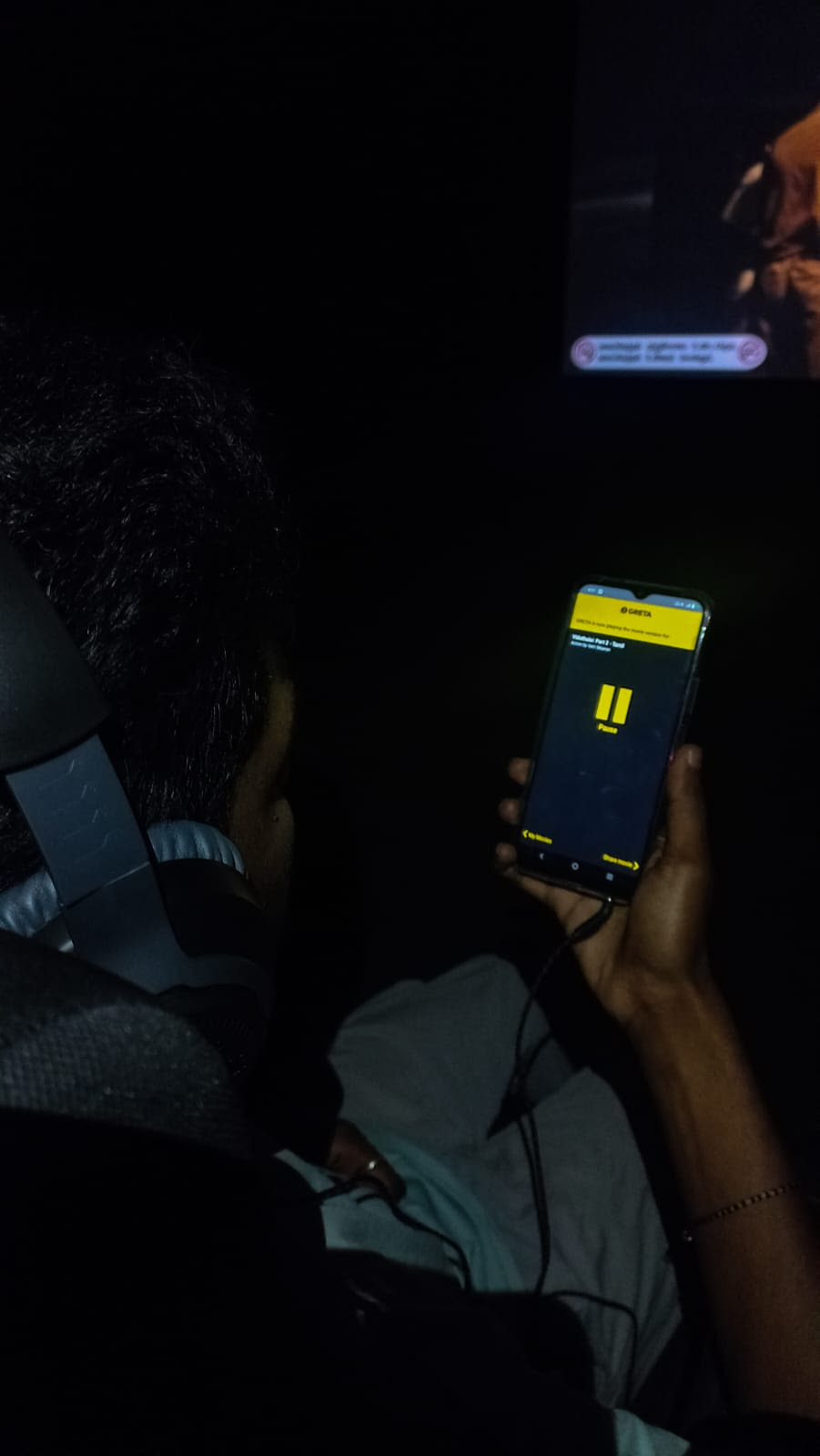
CC (closed captioning) and OC (open captioning) refer to the on-screen text that displays the dialogue and sound effects in sync with the audio content of the film. The CC/OC provision allows hearing-impaired users to read the text whenever required, as it explains the dialogue between film characters, visual elements, etc., through the text. For example, door noises, explosions, descriptions of fight scenes, and the feeling or emotion that music evokes in the listener are explained to the hearing-impaired users through on-screen texts. Further, these closed captions allow people with hearing impairments and language barriers to fully engage with the audio content of the film in their regional language.
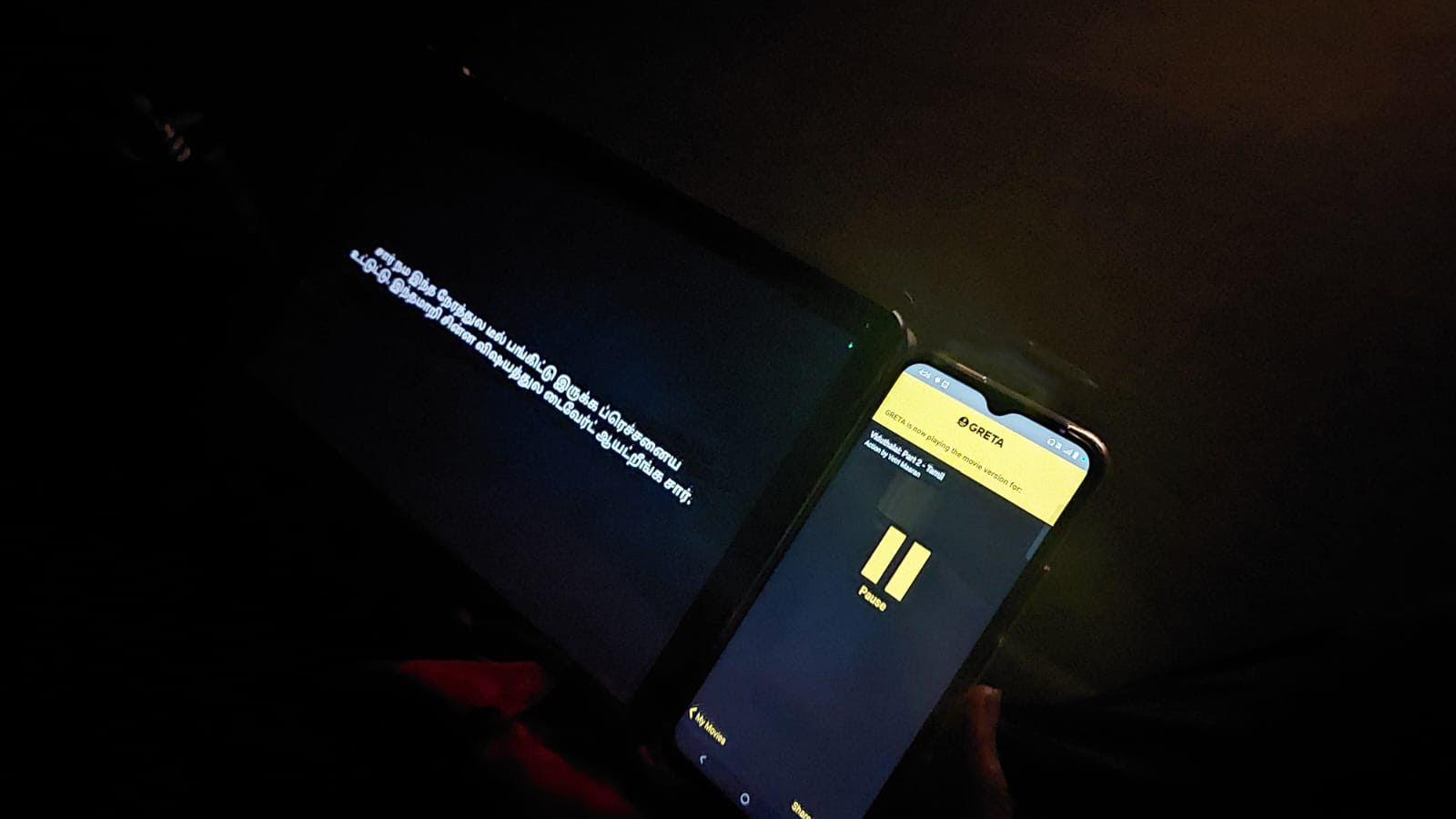
Also, major events like the National Film Awards & International Film Festivals are expected to comply with these guidelines from 1st January 2025.
To improve accessibility standards, filmmakers should facilitate CC/OC and AD as a feature in mobile film apps. Additionally, theatres should provide special equipment to people with disabilities during regular screenings, like special glasses, smart glasses for closed captioning, and headphones/earphones for listening to audio description (AD). This initiative aims to make cinema more inclusive and accessible to all by promoting equal opportunities for people with disabilities.
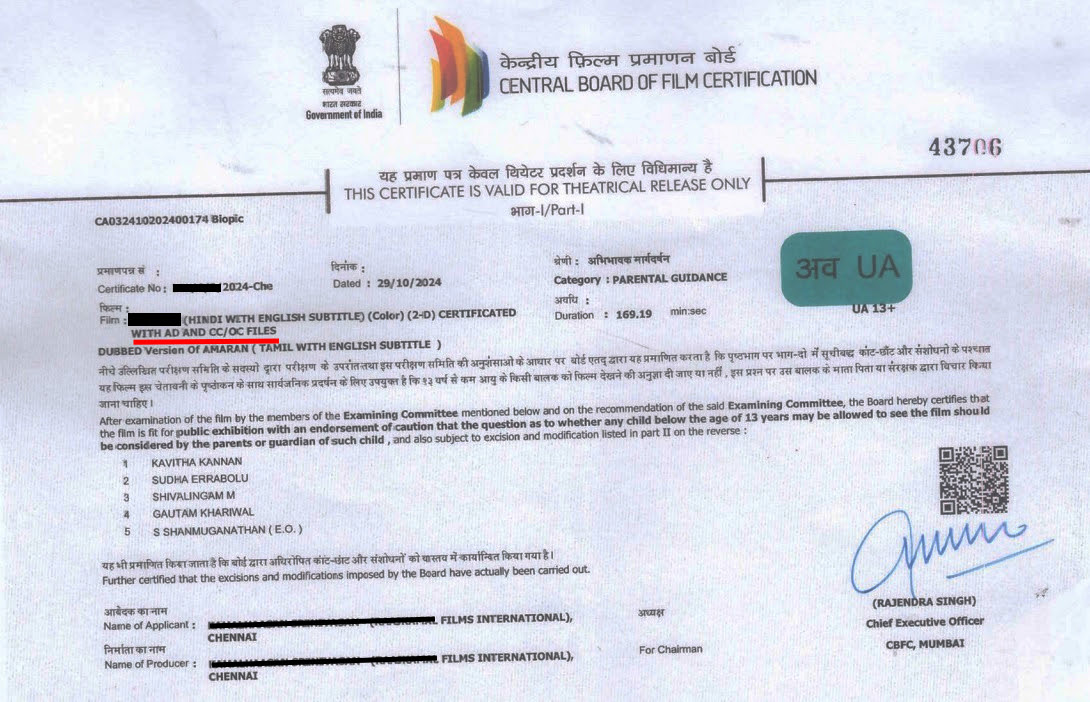
Dhananjeyan, a film producer & distributor in Chennai, welcomed the initiative and support for the differently-abled to make films more accessible. He said that making CC captions and AD audio descriptions of films costs from ₹20,000 to ₹40,000 for one language. But that notwithstanding, finding a suitable app or accessible app on the Play Store – integrating CC and AD files—comes at an expensive cost of around ₹1.5 lakhs for three years. He also emphasised that this expense is manageable for high-budget films but is a challenge for low-budget films. He requested that the government provide a stable helping hand to incorporate the CC and AD applications with all access, which would greatly benefit the film industry and society.

When the visually impaired watched the film…
Ambika Raj, founder of the Agal Foundation Trust in Chennai, said that the NGO has arranged the special screening of more than 20 films with audio descriptions for the visually impaired, enabling viewers to engage with the cinema viewing experience fully. The introduction of the audio description method has been a massive success.

“Everyone is excited to see the films in new dimensions. We, together with Qube Cinema, provided the audio descriptions, explaining each visual element and audio-describing the scenes in a film through the voiceover. This has made a happy and entertaining experience for the visually impaired audiences, who now cheer and enjoy films more than ever before,” she added.
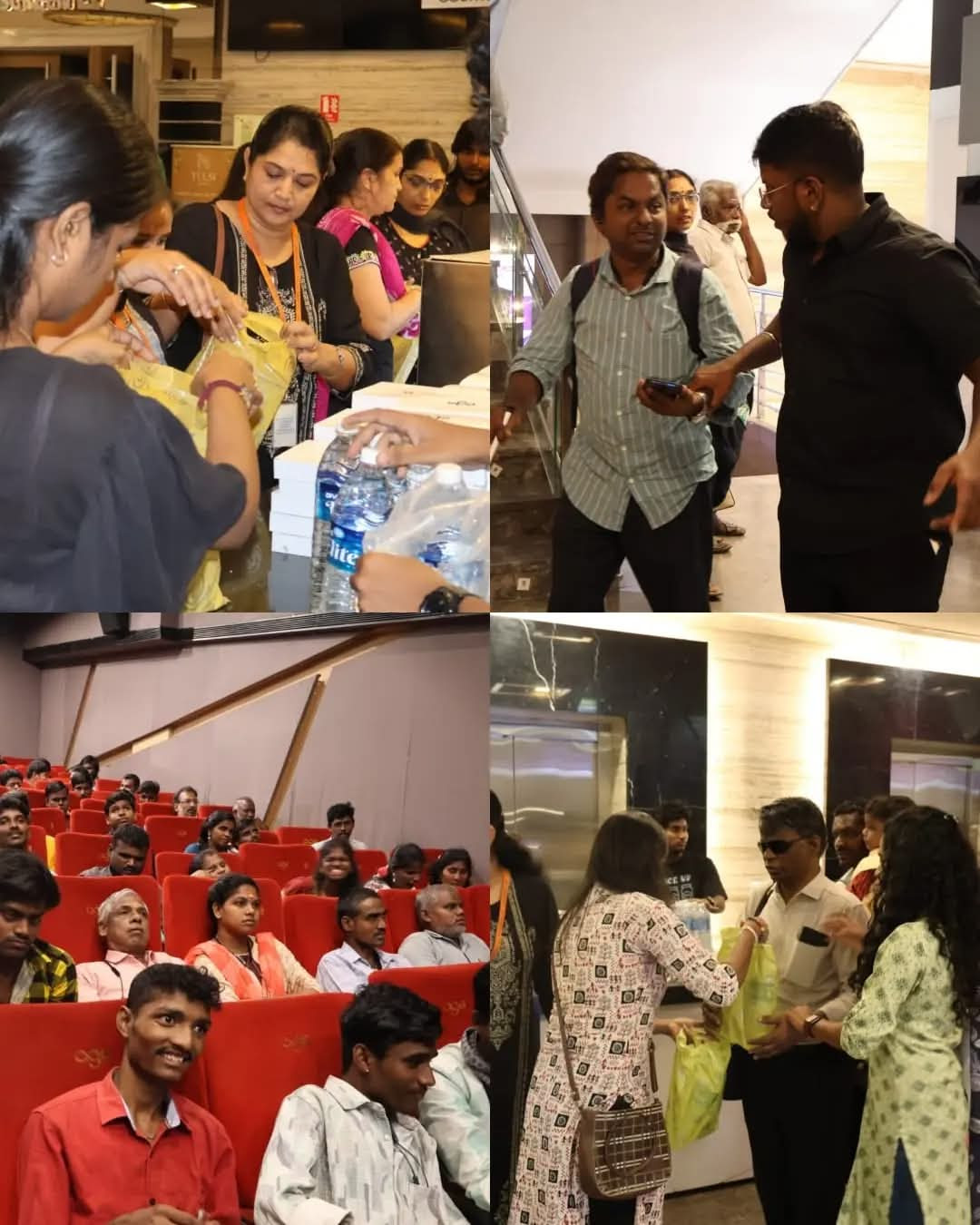
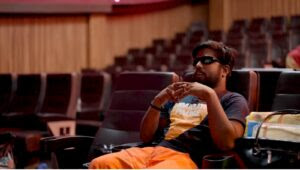
Gokul Raj, visually impaired since birth, hails from Tiruvannamalai. He came to Chennai for a special audio description show of the film “Ponnien Selvan – Part II. He watched the film with 250 of his friends. He shared his experience with The Voices and said he and his friends had watched many such special screenings without AD earlier. “I belong to a village and have not gone to theatres. But this time, I liked the sound effects of the theatres; the vibe was so excellent. Normally, when we are in our house, sitting in a corner listening to the TV audio with the surrounding noise. But here in the theatre, we enjoyed watching the movie with AD. Earlier, we could understand the dialogue scenes but were unaware of what was happening on the screen during silent emotional scenes. But now with the AD facility, we are pleased and find it a boon. As the voiceover continuously explains the scenes, we are engaged with them. If such access is available for all the films, it would be very useful for us,” he said.
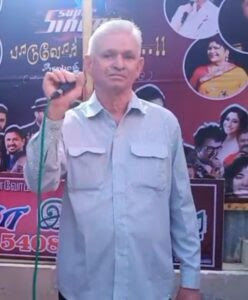
Jeevanandam Packiriswamy, executive committee member of the Tamil Nadu Blind and Melody Singers Association, Trichy, expressed that it was a pleasure that Divyangjan had such important facilities in the cinema-watching experience, like everyone else. “Earlier, we were only hearing the dialogues, sound effects, and music of films, and no other detailed explanation of the scenes was available. But the introduction of commentary for the visually impaired, like AD, has changed the entire experience of watching films. I am eager to visit cinema theaters with these new facilities and enjoy more films.” he added.
